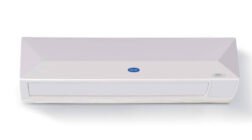Introducing a Greener Side of Home Comfort: Harnessing Green Tech in Heating & Cooling

Welcome, dear readers! Ever walked into a beautifully designed, state-of-the-art home that felt too cold or, on the contrary, too warm? Or perhaps you’ve found yourself wondering about the increasingly high energy costs associated with heating and cooling your home? Let’s put our heads together on these invisible but essential aspects of home planning. Here, we introduce the confluence of home comfort with sustainability – the green technology for heating and cooling systems.
As we continue to explore the domains of architecture, design, and home improvement, one topic that has recently piqued our interest is the advancement in green technology and its influence on heating and cooling systems. More than just controlling temperature, our heating and cooling systems play significant roles in saving energy, reducing carbon footprints, and even in shaping the overall aesthetics of our homes.
With a sharp focus on the latest industry trends and technology, we are about to delve into the how’s, why’s, and what’s of green technology in heating and cooling systems. Read along as we explore their ecological credentials, weigh their pros and cons, and even give you a few insider tips on making them a part of your home design.
Why Green Tech in Heating and Cooling?
The rapid developments in technology have trickled down into the home improvement sector, bringing forth green alternatives that aren’t merely environmentally friendly on paper, but make a marked difference in lowering energy costs and reducing greenhouse gas emissions. Green technology in heating and cooling is a leap towards a sustainable future.
Proper heating and cooling systems are no longer about maintaining temperatures. Today, it’s about the efficiency of the system, minimising waste, and reducing pollution. Homeowners and builders are moving towards green technology for heating and cooling solutions owing to increasing energy prices, fluctuating climates, and rising consumer demand for energy-efficient innovations.
Global warming and climate change are no longer distant realities but pressing issues we must address. Green technology in heating and cooling systems is a significant step toward combating these environmental challenges. Not only does it promote energy conservation, but it also opens up fresh possibilities for aesthetic and cleverly integrated architectural designs.
What Exactly is Green Tech in Heating and Cooling?
When we talk about green technology, it’s easy to get lost amidst the buzzwords. Is it just another fad? Or does it hold promise for something more substantial?
Simply put, green technology in heating and cooling refers to systems that are manufactured and operated while taking into account environmental impact. Energy efficiency is at the core, minimising waste, and utilising renewable resources effectively. It includes systems like geothermal heat pumps, solar heating, and cooling systems, and energy recovery ventilators, to name a few.
A significant part of green technology in heating and cooling is about smart controls. These include programmable thermostats, home automation systems, and other intelligent devices that allow homeowners to regulate temperatures based on their family’s comfort needs, thus saving energy.
Another critical aspect is the design and materials used for these systems. Built to offer durability and efficiency, green heating and cooling systems pass stringent manufacturing processes that reduce CO2 emissions and ensure energy-efficient operation for many years.
The Cost of Going Green: Pros and Cons
Making a meaningful shift towards sustainability is worth considering, and it goes way beyond being a trendy catchphrase. However, like any other technology, green tech in heating and cooling comes with its own set of pros and cons.
On one hand, such systems are incredibly energy-efficient, which can lead to longer-term cost savings. They also use renewable resources, significantly reducing dependency on fossil fuels. Furthermore, they work quietly and offer an improved quality of indoor air, impacting overall health and wellbeing.
On the flip side, the initial cost of installing green heating and cooling systems can be high. Moreover, depending on the specific system chosen, location and climate can impact their efficiency.
Is it Worth Retrofitting Your Home to Green Tech?
The answer to this question, quite simply, depends on specific situations. As much as we’d love to boast blanket approval, every home, region, and requirement varies significantly. The key is to balance the cost of retrofitting with potential energy savings and overall environmental impact.
Before retrofitting, homeowners should consider conducting a thorough energy audit of their homes to understand the current energy usage and areas of potential improvements. The audit can provide valuable insights into how much energy can be saved, if green technology in heating and cooling systems would be beneficial, and how quickly one could recoup installation costs.
Ready to Make the Switch – Where to Begin?
Making the switch isn’t as daunting as it might sound. The first step is always to understand and evaluate one’s own needs. Consult with a professional or a local energy supplier for an onsite evaluation to guide your choice towards the most efficient option fulfilling your requirements.
An experienced energy auditor or home improvement specialist can help explore the possibilities within the given budget and desired comfort level. They can suggest improvements like enhancing insulation, upgrading to energy-efficient windows, or switching to green heating and cooling systems.
A little upfront due diligence can pay off massively over time, saving you in utility costs while helping our planet.
In Conclusion
Wrapping up, we hope you’ve found our exploration into green technology in heating and cooling to be insightful. By recognising the importance of energy efficiency and smart use of resources, green tech is a valuable path forward in home improvement.
Transitioning doesn’t necessarily require a complete revamping. It can start with small, conscious choices and the understanding that every bit counts towards protecting our environment and ensuring our future.
The integration of green technology in heating and cooling systems also extends beyond its functional advantages into design aesthetics. As we hurdle ahead into an ever-progressing world of home improvement, these sustainable solutions offer an intriguing blend of form, function, and sustainability.
Remember, across every corner you turn in your home improvement journey, there’s a greener choice waiting. Navigating this path may require a little homework, but the rewards are certainly worth the effort. Here’s to a greener, more sustainable, comfortable, and chic home! Let’s strive to make going green a norm, rather than an exception!
![]()

As a lifelong DIY enthusiast, Alex Barton is never afraid to go the extra mile to save a few bucks! From seamless interior decor hacks to effective DIY home renovation tips, he shares a myriad of his experiences for you to unleash your creativity.




















I just like the helpful information you provide in your articles
I like the efforts you have put in this, regards for all the great content.